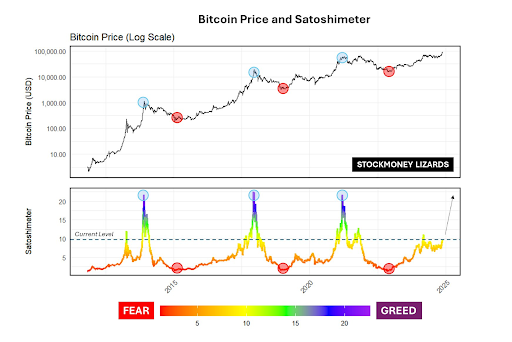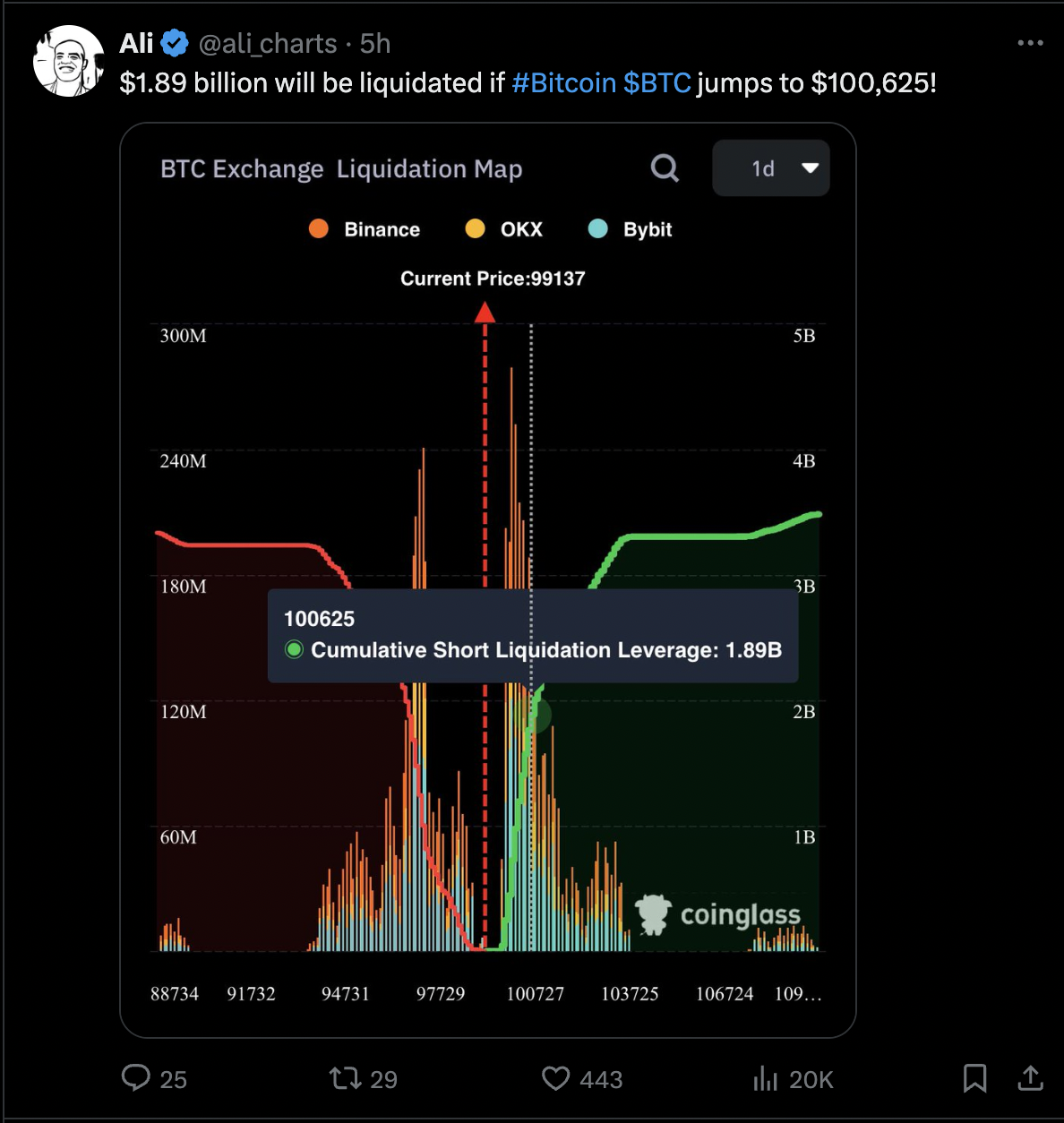What Is Cryptocurrency Staking?
By definition, staking cryptocurrency is the act of using your existing crypto portfolio, by locking it up for a certain period of time, to receive rewards or interest. Staking is similar to receiving interest for having money in a regular savings account, the bank will pay you for holding your money with them. Although a bit more complicated, you are essentially being rewarded for holding a certain cryptocurrency for either a set amount of time where you will be unable to withdraw your staked crypto. However, there are some staking schemes which allow you to quickly unbind your staked crypto, but there will be some consequences. We will dive deeper into the different types of crypto staking while looking at the reasons behind staking in cryptocurrency.
Like anything in investing or cryptocurrency, there will be some element of risk versus reward. Let's take a look at why more and more crypto investors are delving into staking as an alternative to simply HODLing cryptocurrency and how the technology behind your interest-earning cryptocurrency actually works.
The Technology Behind Staking
When you provide cryptocurrency to be staked, you are adding to a staking Staking Staking is defined as the process of holding funds in a cryptocurrency wallet to support the operations of a blockchain network. In particular, staking represents a bid to secure a volume of crypto to receive rewards. In most case however, this process relies on users participating in blockchain-related activities via a personal crypto wallet.The concept of staking is also closely tied to the Proof-of-Stake (PoS). PoS is a type of consensus algorithm in which a blockchain network aims to achieve distributed consensus.This notably differs from Proof-of-Work (PoW) blockchains that instead rely on mining to verify and validate new blocks.Conversely, PoS chains produce and validate new blocks through staking. This allows for blocks to be produced without relying on mining hardware. As such, instead of competing for the next block with heavy computation work, PoS validators are selected based on the number of coins they are committing to stake.Users that stake larger amounts of coins have a higher chance of being chosen as the next block validator. Staking ExplainedStaking requires a direct investment in the cryptocurrency, while each PoS blockchain has its particular staking currency.The production of blocks via staking enables a higher degree of scalability. Moreover, some chains have also moved to adopt the Delegated Proof of Staking (DPoS) model. DPoS allows users to simply signal their support through other participants of the network. In other words, a trusted participant works on behalf of users during decision-making events.The delegated validators or nodes are the ones that handle the major operations and overall governance of a blockchain network. These participate in the processes of reaching consensus and defining key governance parameters. Staking is defined as the process of holding funds in a cryptocurrency wallet to support the operations of a blockchain network. In particular, staking represents a bid to secure a volume of crypto to receive rewards. In most case however, this process relies on users participating in blockchain-related activities via a personal crypto wallet.The concept of staking is also closely tied to the Proof-of-Stake (PoS). PoS is a type of consensus algorithm in which a blockchain network aims to achieve distributed consensus.This notably differs from Proof-of-Work (PoW) blockchains that instead rely on mining to verify and validate new blocks.Conversely, PoS chains produce and validate new blocks through staking. This allows for blocks to be produced without relying on mining hardware. As such, instead of competing for the next block with heavy computation work, PoS validators are selected based on the number of coins they are committing to stake.Users that stake larger amounts of coins have a higher chance of being chosen as the next block validator. Staking ExplainedStaking requires a direct investment in the cryptocurrency, while each PoS blockchain has its particular staking currency.The production of blocks via staking enables a higher degree of scalability. Moreover, some chains have also moved to adopt the Delegated Proof of Staking (DPoS) model. DPoS allows users to simply signal their support through other participants of the network. In other words, a trusted participant works on behalf of users during decision-making events.The delegated validators or nodes are the ones that handle the major operations and overall governance of a blockchain network. These participate in the processes of reaching consensus and defining key governance parameters. Read this Term pool, similar to our savings accounts analogy. From there, your cryptocurrency is put to work on the blockchain, the whole reason is it is possible to make money from cryptocurrency.
Cryptocurrencies that allow staking will have a proof of stake mechanism, the mechanism which validates all transactions, making sure each transaction is completely secured and verified. This is how cryptocurrency transactions can be safe, without having a centralized body involved, such as a bank. When your staked cryptocurrency is put to work, it becomes part of the process.
Proof of stake sways away from a minor reliant method, which is extremely resource-intensive and simply relies on investors who are invested in the cryptocurrency for its validation. If you have even a minute amount of cryptocurrency being staked, you are part of the blockchain and the future.
Validators are the big players in staking, and those with more skin in the game are rewarded the most. Most individual stakers will not become validators, as it usually requires a hefty initial investment so it is advised to choose a reliable validator to stake your cryptocurrency through. Often validators are prioritized by stakers by how much of their own money they have invested, as if problems occur a slashing event could take place, something we will get back to later.
Can You Make Money from Staking?
Like anything in the crypto sphere, investors are concerned about profitability. On average, crypto staking rewards vary anywhere from 5 to 20%, the higher the percentage the shorter amount of time you are likely to receive those rewards. However, over the past years, we have seen some cryptocurrencies consistently grant 10-12% returns on staked cryptocurrencies, making them on-par or above the average return rate of indexes such as the S&P 500.
Many staking opportunities are advertised as unheard of returns, like 400% APY, which should be seen as extremely unrealistic and most likely avoided.
Different Types of Crypto Staking Rewards
APR versus APY
If you decide to begin your staking journey, rewards will either be shown as an APR percentage or APY. APR is the raw interest rate over a year, or what percentage return you would expect to make, while APY takes into account the effect of compounding.
ADVERTISEMENT
As a rule, the greater difference between APR and APY represents the amount of times the interest is compounded. For example, if a cryptocurrency is constantly compounding and reinvesting the interest back into the stake, the APY can be much higher than the APR.
It is important to note that each stake comes with its specific rules. Some cryptocurrency stakes will allow instant compounding into the same pool, but some will simply grant you the interest, which you can then take into another stake or simply withdraw.
Rewards Payout Rate
Each cryptocurrency stake will have a different rewards payout rate, or how frequently you receive and have access to your interest. For most investors, the higher the frequency the better as that payout can be put to work in a different stake, or traded for another cryptocurrency. Ethereum staking, for example, usually grants daily payout rewards while others may vary from a couple of days to a week.
What Are the Requirements to Stake My Crypto?
For every different cryptocurrency stake, there are two main factors that you need to look out for:
- Minimum Balance Required
There will be a minimum initial stake required for everyone's stackable cryptocurrency. The good news is, that there are many staking options that require little to no minimum requirement, such as a single CRO staked, or 0.01 ALGO.
Often, cryptocurrencies with a very small requirement will have different rules about their ‘lock up’ period, affecting how and when you can remove your liquidity from the stake.
2. Lock-Up Period
In return for high APY, you will usually be asked to confirm a lock-up period, which can alter your rewards received, the longer you lock up usually in direct proportion to the reward. Lock ups can mean a few days before being able to remove your liquidity Liquidity The term liquidity refers to the process, speed, and ease of which a given asset or security can be converted into cash. Notably, liquidity surmises a retention in market price, with the most liquid assets representing cash. The most liquid asset of all is cash itself. · In economics, liquidity is defined by how efficiently and quickly an asset can be converted into usable cash without materially affecting its market price. · Nothing is more liquid than cash, while other assets represent varying degrees of liquidity. This can be differentiated as market liquidity or accounting liquidity.· Liquidity refers to a tangible construct that can be measures. The most common ways to do so include a current ratio, quick ratio, and cash ratio. What is the Definition of Liquidity? Liquidity is a common definition used in investing, banking, or the financial services space. Its primary function is to ascertain how quickly a given asset can be bought, sold, or exchanged without a disparity in market price. Which of the following assets is the most liquid? By definition, in terms of liquidity, cash is unequivocally seen as the most liquid asset in an economic sense. This is due to its widespread acceptance and ease of conversion into other assets, forms of cash, or currencies, etc. All other liquid assets must be able to be quickly and efficiently converted into cash, i.e., financial liquidity. This includes such things as stocks, commodities, or virtually any other construct that has an associated value. By extension, illiquid or non-liquid assets are not able to be quickly converted into cash. These assets, also known as tangible assets, can include such things as rare art or collectables, real estate, etc. Liquidity Spectrum Liquid assets can be defined primarily as either cash on hand or simply an asset that can be easily or readily converted into usable cash. It is important to note that cash is not uniformly liquid for several reasons. The below examples encompass all types of assets and their corresponding level of liquidity. Examples of Liquid Assets or Securities A good example of this is the US dollar, which is recognized or accepted globally, and backed by the US government or Federal Reserve Bank. Other major forms of cash include Euros, or major currencies. This differs notably from the legal tender in many emerging countries or others for political or economic reasons. Cash aside, assets such as stocks or equities, bonds and other securities, money market assets, marketable securities, US treasuries or T-notes, exchange-traded funds (ETFs), a savings account, and mutual funds serve as the most liquid assets. These are generally assumed to be quick assets. Each of these assets can be converted into cash either instantaneously, or via any brokerage platform, exchange, etc., often in as little as minutes or seconds. As such, these assets are liquid. Examples of Illiquid Assets or Securities Conversely, illiquid assets still retain importance and value, though are much more difficult to convert into cash. Common examples of this include land or real estate, intellectual property, or other forms of capital such as equipment or machinery. In the examples above, liquid assets are assumed to be convertible into cash without substantial fees or delays in time. Illiquid assets on the other hand often suffer from fees or additional conversion costs, processing times, ultimately creating a price disparity. The best example of an illiquid asset is a house. For many individuals this is the most valuable asset they will own in their entire lives. However, selling a house typically requires taxes, realtor fees, and other costs, in addition to time. Real estate or land also takes much longer to exchange into cash, relative to other assets. Types of Liquidity Overall, liquidity is a broad term that needs to be defined by two different measures: market liquidity and accounting liquidity. Both measures deal with different constructs or entities entirely, though are useful metrics with regards to individuals or financial markets. Market Liquidity Market liquidity is a broader term that is used by a market maker to measure the ease of which assets can be bought and sold at transparent prices, namely across exchanges, stock markets, or other financial sectors. This can include among others, a real estate or property market, market for fine arts and collectable, and other goods. Market Liquidity Example As mentioned above, certain financial markets are much more liquid than others. The degree to which stocks from large companies or foreign currencies can be exchanged is much easier than finding a readily available market for antiques, collectables, or other capital, regardless of utility. Overall, a stock market, financial brokerage, or exchange is considered to have the high market liquidity. This is because the difference between both the bid and ask prices between parties is very low. The lower the spread between these two prices, the more liquid a given market is. Additionally, low liquidity refers to a higher spread between two prices. Why Liquidity Varies and What Does Liquidity Mean in Stocks? Every asset has a variable level of liquidity meaning this can change depending on what is being analyzed. One can define liquidity in stocks or stock markets in the same way as in foreign exchange markets, brokers, commodities exchanges, and crypto exchanges. Additionally, how large the market is will also dictate liquidity. The foreign exchange market for example is currently the largest by trading volume with high liquidity due to cash flows. This is hardly surprising given that forms of cash or currencies are being exchanged. What is Liquidity in Stocks? A stock's liquidity refers to how rapidly shares of a stock can be bought or sold without largely impacting a stock price. By definition, liquidity in stocks varies for a number of reasons. Stocks with low liquidity may be difficult to sell and may cause you to take a bigger loss if you cannot sell the shares when you want to. In finance, the most liquid assets are always the most popular. By extension, if a spread between buyers and sellers increases, the market is considered to be less liquid. A good example of this is the real estate or property market. While highly valuable, there are large disparities between the purchase price and selling price of property, as well as the time associated in making these transactions, and additional fees incurred by other parties. Liquidity providers play a key role in this regard. Accounting Liquidity Unlike market liquidity, accounting liquidity measures something different entirely. Accounting liquidity is a measure by which either an individual or entity can meet their respective current financial obligations with the current liquid assets available to them. This includes paying off debts, overhead, or any other fixed costs associated with a business. Accounting liquidity is a functional comparison between one’s current liquid assets and their current liabilities. In the United States and other countries, companies and individuals have to reconcile accounting on a yearly basis. Accounting liquidity is an excellent measure that captures financial obligations due in a year. Accounting Liquidity Example Accounting liquidity itself can be differentiated by several ratios, controlling for how liquid assets are. These measures are useful tools for not just the individual or company in focus but for others that are trying to ascertain current financial health.As an example, accounting liquidity can measure any company’s current financial assets and compare them to its financial obligations. If there is a large disparity between these figures, or much more assets than obligations, a company can be considered to have a strong depth of liquidity.How to Calculate Liquidity Liquidity is of importance to investors, financial market participants, analysts, or even for an investment strategy. Calculating liquidity is a measure of firm or individual’s ability to utilize or harness current liquid assets to current cover short-term debt. This can be achieved using a total of four formulas: the current ratio, quick ratio, acid-test variation, and cash ratio. Current Ratio The current ratio is the easiest measure due to its lack of complexity. Quite simply, the current ratio measures a firm or individual’s current assets or those than can be sold within a calendar year, weighed against all current liabilities. Current Ratio = Current Assets/Current Liabilities If the current ratio’s value is greater than 1, then the entity in question can be assumed to reconcile its financial obligations using its current liquid assets. Highly liquid assets will correspond to higher numbers in this regard. Conversely, any number less than 1 indicates that current liquid assets are not enough to cover short-term obligations. Quick Ratio A quick ratio is a slightly more complex way of measuring accounting liquidity via a balance sheet. Unlike the current ratio, the quick ratio excludes current assets that are not as liquid as cash, cash equivalents, or other shorter-term investments. The quick ratio can be defined below by the following: Quick Ratio = (Cash or Cash Equivalents + Shorter-Term Investments + Accounts Receivable)/Current Liabilities Acid-Test Ratio The acid-test ratio is a variation of the quick ratio. The acid-test ratio seeks to deduct inventory from current assets, serving as a traditionally broader measure that is more forgiving to individuals or entities. Acid-Test Ratio = (Current Assets – Inventories – Prepaid Costs)/Current Liabilities Cash Ratio Finally, the cash ratio further isolates current assets, looking to measure only liquid assets that are designated as cash or cash equivalents. In this sense, the cash ratio is the most precise of the other liquidity ratios, excluding accounts receivable, inventories, or other assets. A more precise measure has its uses, namely regarding assessing financial strength in the face of an emergency, i.e., an unforeseen and time sensitive event. The cash ratio can help measure an entity or individual’s hypothesized solvency in the face of unexpected scenarios, events, etc. As such, the cash ratio is defined below: Cash Ratio = Cash and Cash Equivalents/Current Liabilities The cash ratio is not simply a doomsday tool but a highly practical measure when determining market value. In the financial services space, even large companies or profitable institutions can find themselves at liquidity risk due to unexpected events beyond their control. Why is Liquidity Important and Why it Matters to You? Liquidity is very important for not just financial markets but for individuals and investors. Liquid markets benefit all market participants and make it easier to buy and sell securities, stocks, collectables, etc. On an individual level, this is important for personal finance, as ordinary investors are able to better take advantage of trading opportunities. Additionally, high liquidity promotes financial health in companies in the same way it does for individuals. Conclusion – What Does Liquidity Mean? What is liquidity? This metric is a commonly used as a measure in the investing, banking, or financial services space. Liquidity determines how quickly a given asset can be bought, sold, or exchanged without a disparity in market price. Which of the following assets is the most liquid? – cash, stocks, real estate. Of all assets, cash or money is the most liquid, meaning it is the easiest to utilize. All other liquid assets must be able to be quickly and efficiently converted into cash. This includes such things as stocks, commodities, or virtually any other construct that has an associated value. Conversely, illiquid or non-liquid assets are not able to be quickly converted into cash. These assets, also known as tangible assets, can include such things as rare art or collectables, real estate, etc. Frequently Asked Questions About Liquidity Is Liquidity Good or Bad? The term liquidity refers to a measure and is neither good nor bad but is instead a metric of how convertible an asset is to cash. However, high liquidity is associated with lower risk, while a liquid stock is more likely to keep its value when being traded.Is a Home a Liquid Asset? A home or properly is not considered to be a liquid asset. Selling any property can incur additional costs and take a long amount of time. Additionally, there is often a price disparity from the time of purchase, meaning a seller may not even get its original market value back at the time of the sale. Why Are Stocks Liquid? Stocks are some of the most liquid assets in financial markets because these assets can be converted to cash in a short period of time in the event of any financial emergency. Is Tesla a Liquid Stock? Tesla is a liquid stock and while hugely volatile, is an integral part of the NASDAQ and is a globally recognized company. Additionally, the company is a popular single-stock CFD offering at many brokerages, with very high volumes. Is a Pension a Liquid Asset? Certain pensions are liquid assets once you have reached a retirement age. Until you are eligible to withdraw or collect a pension, without early withdrawal penalty, it is not considered a liquid asset. The term liquidity refers to the process, speed, and ease of which a given asset or security can be converted into cash. Notably, liquidity surmises a retention in market price, with the most liquid assets representing cash. The most liquid asset of all is cash itself. · In economics, liquidity is defined by how efficiently and quickly an asset can be converted into usable cash without materially affecting its market price. · Nothing is more liquid than cash, while other assets represent varying degrees of liquidity. This can be differentiated as market liquidity or accounting liquidity.· Liquidity refers to a tangible construct that can be measures. The most common ways to do so include a current ratio, quick ratio, and cash ratio. What is the Definition of Liquidity? Liquidity is a common definition used in investing, banking, or the financial services space. Its primary function is to ascertain how quickly a given asset can be bought, sold, or exchanged without a disparity in market price. Which of the following assets is the most liquid? By definition, in terms of liquidity, cash is unequivocally seen as the most liquid asset in an economic sense. This is due to its widespread acceptance and ease of conversion into other assets, forms of cash, or currencies, etc. All other liquid assets must be able to be quickly and efficiently converted into cash, i.e., financial liquidity. This includes such things as stocks, commodities, or virtually any other construct that has an associated value. By extension, illiquid or non-liquid assets are not able to be quickly converted into cash. These assets, also known as tangible assets, can include such things as rare art or collectables, real estate, etc. Liquidity Spectrum Liquid assets can be defined primarily as either cash on hand or simply an asset that can be easily or readily converted into usable cash. It is important to note that cash is not uniformly liquid for several reasons. The below examples encompass all types of assets and their corresponding level of liquidity. Examples of Liquid Assets or Securities A good example of this is the US dollar, which is recognized or accepted globally, and backed by the US government or Federal Reserve Bank. Other major forms of cash include Euros, or major currencies. This differs notably from the legal tender in many emerging countries or others for political or economic reasons. Cash aside, assets such as stocks or equities, bonds and other securities, money market assets, marketable securities, US treasuries or T-notes, exchange-traded funds (ETFs), a savings account, and mutual funds serve as the most liquid assets. These are generally assumed to be quick assets. Each of these assets can be converted into cash either instantaneously, or via any brokerage platform, exchange, etc., often in as little as minutes or seconds. As such, these assets are liquid. Examples of Illiquid Assets or Securities Conversely, illiquid assets still retain importance and value, though are much more difficult to convert into cash. Common examples of this include land or real estate, intellectual property, or other forms of capital such as equipment or machinery. In the examples above, liquid assets are assumed to be convertible into cash without substantial fees or delays in time. Illiquid assets on the other hand often suffer from fees or additional conversion costs, processing times, ultimately creating a price disparity. The best example of an illiquid asset is a house. For many individuals this is the most valuable asset they will own in their entire lives. However, selling a house typically requires taxes, realtor fees, and other costs, in addition to time. Real estate or land also takes much longer to exchange into cash, relative to other assets. Types of Liquidity Overall, liquidity is a broad term that needs to be defined by two different measures: market liquidity and accounting liquidity. Both measures deal with different constructs or entities entirely, though are useful metrics with regards to individuals or financial markets. Market Liquidity Market liquidity is a broader term that is used by a market maker to measure the ease of which assets can be bought and sold at transparent prices, namely across exchanges, stock markets, or other financial sectors. This can include among others, a real estate or property market, market for fine arts and collectable, and other goods. Market Liquidity Example As mentioned above, certain financial markets are much more liquid than others. The degree to which stocks from large companies or foreign currencies can be exchanged is much easier than finding a readily available market for antiques, collectables, or other capital, regardless of utility. Overall, a stock market, financial brokerage, or exchange is considered to have the high market liquidity. This is because the difference between both the bid and ask prices between parties is very low. The lower the spread between these two prices, the more liquid a given market is. Additionally, low liquidity refers to a higher spread between two prices. Why Liquidity Varies and What Does Liquidity Mean in Stocks? Every asset has a variable level of liquidity meaning this can change depending on what is being analyzed. One can define liquidity in stocks or stock markets in the same way as in foreign exchange markets, brokers, commodities exchanges, and crypto exchanges. Additionally, how large the market is will also dictate liquidity. The foreign exchange market for example is currently the largest by trading volume with high liquidity due to cash flows. This is hardly surprising given that forms of cash or currencies are being exchanged. What is Liquidity in Stocks? A stock's liquidity refers to how rapidly shares of a stock can be bought or sold without largely impacting a stock price. By definition, liquidity in stocks varies for a number of reasons. Stocks with low liquidity may be difficult to sell and may cause you to take a bigger loss if you cannot sell the shares when you want to. In finance, the most liquid assets are always the most popular. By extension, if a spread between buyers and sellers increases, the market is considered to be less liquid. A good example of this is the real estate or property market. While highly valuable, there are large disparities between the purchase price and selling price of property, as well as the time associated in making these transactions, and additional fees incurred by other parties. Liquidity providers play a key role in this regard. Accounting Liquidity Unlike market liquidity, accounting liquidity measures something different entirely. Accounting liquidity is a measure by which either an individual or entity can meet their respective current financial obligations with the current liquid assets available to them. This includes paying off debts, overhead, or any other fixed costs associated with a business. Accounting liquidity is a functional comparison between one’s current liquid assets and their current liabilities. In the United States and other countries, companies and individuals have to reconcile accounting on a yearly basis. Accounting liquidity is an excellent measure that captures financial obligations due in a year. Accounting Liquidity Example Accounting liquidity itself can be differentiated by several ratios, controlling for how liquid assets are. These measures are useful tools for not just the individual or company in focus but for others that are trying to ascertain current financial health.As an example, accounting liquidity can measure any company’s current financial assets and compare them to its financial obligations. If there is a large disparity between these figures, or much more assets than obligations, a company can be considered to have a strong depth of liquidity.How to Calculate Liquidity Liquidity is of importance to investors, financial market participants, analysts, or even for an investment strategy. Calculating liquidity is a measure of firm or individual’s ability to utilize or harness current liquid assets to current cover short-term debt. This can be achieved using a total of four formulas: the current ratio, quick ratio, acid-test variation, and cash ratio. Current Ratio The current ratio is the easiest measure due to its lack of complexity. Quite simply, the current ratio measures a firm or individual’s current assets or those than can be sold within a calendar year, weighed against all current liabilities. Current Ratio = Current Assets/Current Liabilities If the current ratio’s value is greater than 1, then the entity in question can be assumed to reconcile its financial obligations using its current liquid assets. Highly liquid assets will correspond to higher numbers in this regard. Conversely, any number less than 1 indicates that current liquid assets are not enough to cover short-term obligations. Quick Ratio A quick ratio is a slightly more complex way of measuring accounting liquidity via a balance sheet. Unlike the current ratio, the quick ratio excludes current assets that are not as liquid as cash, cash equivalents, or other shorter-term investments. The quick ratio can be defined below by the following: Quick Ratio = (Cash or Cash Equivalents + Shorter-Term Investments + Accounts Receivable)/Current Liabilities Acid-Test Ratio The acid-test ratio is a variation of the quick ratio. The acid-test ratio seeks to deduct inventory from current assets, serving as a traditionally broader measure that is more forgiving to individuals or entities. Acid-Test Ratio = (Current Assets – Inventories – Prepaid Costs)/Current Liabilities Cash Ratio Finally, the cash ratio further isolates current assets, looking to measure only liquid assets that are designated as cash or cash equivalents. In this sense, the cash ratio is the most precise of the other liquidity ratios, excluding accounts receivable, inventories, or other assets. A more precise measure has its uses, namely regarding assessing financial strength in the face of an emergency, i.e., an unforeseen and time sensitive event. The cash ratio can help measure an entity or individual’s hypothesized solvency in the face of unexpected scenarios, events, etc. As such, the cash ratio is defined below: Cash Ratio = Cash and Cash Equivalents/Current Liabilities The cash ratio is not simply a doomsday tool but a highly practical measure when determining market value. In the financial services space, even large companies or profitable institutions can find themselves at liquidity risk due to unexpected events beyond their control. Why is Liquidity Important and Why it Matters to You? Liquidity is very important for not just financial markets but for individuals and investors. Liquid markets benefit all market participants and make it easier to buy and sell securities, stocks, collectables, etc. On an individual level, this is important for personal finance, as ordinary investors are able to better take advantage of trading opportunities. Additionally, high liquidity promotes financial health in companies in the same way it does for individuals. Conclusion – What Does Liquidity Mean? What is liquidity? This metric is a commonly used as a measure in the investing, banking, or financial services space. Liquidity determines how quickly a given asset can be bought, sold, or exchanged without a disparity in market price. Which of the following assets is the most liquid? – cash, stocks, real estate. Of all assets, cash or money is the most liquid, meaning it is the easiest to utilize. All other liquid assets must be able to be quickly and efficiently converted into cash. This includes such things as stocks, commodities, or virtually any other construct that has an associated value. Conversely, illiquid or non-liquid assets are not able to be quickly converted into cash. These assets, also known as tangible assets, can include such things as rare art or collectables, real estate, etc. Frequently Asked Questions About Liquidity Is Liquidity Good or Bad? The term liquidity refers to a measure and is neither good nor bad but is instead a metric of how convertible an asset is to cash. However, high liquidity is associated with lower risk, while a liquid stock is more likely to keep its value when being traded.Is a Home a Liquid Asset? A home or properly is not considered to be a liquid asset. Selling any property can incur additional costs and take a long amount of time. Additionally, there is often a price disparity from the time of purchase, meaning a seller may not even get its original market value back at the time of the sale. Why Are Stocks Liquid? Stocks are some of the most liquid assets in financial markets because these assets can be converted to cash in a short period of time in the event of any financial emergency. Is Tesla a Liquid Stock? Tesla is a liquid stock and while hugely volatile, is an integral part of the NASDAQ and is a globally recognized company. Additionally, the company is a popular single-stock CFD offering at many brokerages, with very high volumes. Is a Pension a Liquid Asset? Certain pensions are liquid assets once you have reached a retirement age. Until you are eligible to withdraw or collect a pension, without early withdrawal penalty, it is not considered a liquid asset. Read this Term but can vary from weeks to months or even years.
You may be asked at the start of your stake to lock up your crypto for a certain amount of time, or have no such restriction, but have to wait a period of time after you de-stake your crypto before you have access to it. Importantly, during the de-staking period, you will not receive any interest.
Can Every Cryptocurrency Be Staked?
Since 2017, we have seen an increasing amount of stackable cryptocurrencies, as proof-of-stake becomes more mainstream. This does not mean that all cryptocurrencies can be staked, the opposite is true.
Is There Any Risk to Cryptocurrency Staking?
As mentioned before, the bigger the cryptocurrency, the more safe stakers feel. However, there are some inherent risks of staking, which all investors should be aware of. You can find a list of all PoS coins here.
Most importantly, if you chose to stake your cryptocurrency, especially for a long period of time, you should feel bullish about the long-term potential of that coin and its ability to either hold its current value or increase in value. Although you can still earn interest on a depreciating asset, you are still losing value.
This is why many staking veterans chose to stake stablecoins to fully reap the rewards of staking from a stable asset. Options for stablecoin staking are often offered on centralized exchanges which require liquidity, whereas many coins are staked via a decentralized network, such as crypto.com’s DeFi wallet.
Slashing Events
True to their name, slashing events occur when a validator is punished for malicious behavior and a predefined percentage or amount of their stake is removed. Slashing events are a necessary evil to keep validators working towards the network's best interest and in a world of decentralization, a good way to anonymously punish bad behavior.
If you have cryptocurrency staked with a validator that has been slashed, some of your cryptocurrency stake will also be slashed. This makes choosing the correct validator vital to your staking success, like seeing which validator has the most skin in the game.
We will dive deeper into slashing events, why they occur and what behavior they are punishing in a more in-depth article on slashing.
Not all PoS (Proof of stake) protocols use slashing as a mechanism to punish bad behavior, but those without slashing events are often seen as more insecure.
Staking as a Philosophy
Like any investment class, there is usually a risk-averse and risk-tolerant approach. For cryptocurrency, the risk-takers like to invest in coins or tokens with huge potential gains, while risk-averse investors choose to HODL blue chip crypto, while most of us slot somewhere in the middle. Although there is no right way to invest with your own money, staking and other passive income-creating events like liquidity pools have created opportunities for investors to diversify their portfolio and not simply rely on trading as their money-making tool.
Staking has allowed large crypto investors to live a work-free life completely off their staking rewards, some extremely comfortably. For example:
If I was to stake CRO with an investment of £200,000, with rewards paid weekly, I would receive a whopping £2,000 monthly, equivalent to the average annual salary in the UK. Although £200,000 is a huge amount of money, in the world of half a million-pound jpegs, it puts into perspective how achievable it may actually be. Remember, those rewards are paid weekly and can be reinvested into anything of your choosing, or simply withdrawn into fiat. On top of this, your staked cryptocurrency may still rise in value while receiving your interest, creating an unforeseen gain.
Staking can be seen as a relatively safe option for massive gains in the crypto world. With banks offering less than a percent to store your hard-earned fiat with them, why not take your money elsewhere and start to reap the rewards, while contributing to the blockchain.
Final Thoughts
Staking may not be for everyone, as it can be viewed as boring in a space rife with speculation and crazy gains. However, if you are looking to securely and consistently build your crypto portfolio, allocating a percentage of your portfolio to strong staking protocols can help build security in a notoriously unsecure market.
What Is Cryptocurrency Staking?
By definition, staking cryptocurrency is the act of using your existing crypto portfolio, by locking it up for a certain period of time, to receive rewards or interest. Staking is similar to receiving interest for having money in a regular savings account, the bank will pay you for holding your money with them. Although a bit more complicated, you are essentially being rewarded for holding a certain cryptocurrency for either a set amount of time where you will be unable to withdraw your staked crypto. However, there are some staking schemes which allow you to quickly unbind your staked crypto, but there will be some consequences. We will dive deeper into the different types of crypto staking while looking at the reasons behind staking in cryptocurrency.
Like anything in investing or cryptocurrency, there will be some element of risk versus reward. Let's take a look at why more and more crypto investors are delving into staking as an alternative to simply HODLing cryptocurrency and how the technology behind your interest-earning cryptocurrency actually works.
The Technology Behind Staking
When you provide cryptocurrency to be staked, you are adding to a staking Staking Staking is defined as the process of holding funds in a cryptocurrency wallet to support the operations of a blockchain network. In particular, staking represents a bid to secure a volume of crypto to receive rewards. In most case however, this process relies on users participating in blockchain-related activities via a personal crypto wallet.The concept of staking is also closely tied to the Proof-of-Stake (PoS). PoS is a type of consensus algorithm in which a blockchain network aims to achieve distributed consensus.This notably differs from Proof-of-Work (PoW) blockchains that instead rely on mining to verify and validate new blocks.Conversely, PoS chains produce and validate new blocks through staking. This allows for blocks to be produced without relying on mining hardware. As such, instead of competing for the next block with heavy computation work, PoS validators are selected based on the number of coins they are committing to stake.Users that stake larger amounts of coins have a higher chance of being chosen as the next block validator. Staking ExplainedStaking requires a direct investment in the cryptocurrency, while each PoS blockchain has its particular staking currency.The production of blocks via staking enables a higher degree of scalability. Moreover, some chains have also moved to adopt the Delegated Proof of Staking (DPoS) model. DPoS allows users to simply signal their support through other participants of the network. In other words, a trusted participant works on behalf of users during decision-making events.The delegated validators or nodes are the ones that handle the major operations and overall governance of a blockchain network. These participate in the processes of reaching consensus and defining key governance parameters. Staking is defined as the process of holding funds in a cryptocurrency wallet to support the operations of a blockchain network. In particular, staking represents a bid to secure a volume of crypto to receive rewards. In most case however, this process relies on users participating in blockchain-related activities via a personal crypto wallet.The concept of staking is also closely tied to the Proof-of-Stake (PoS). PoS is a type of consensus algorithm in which a blockchain network aims to achieve distributed consensus.This notably differs from Proof-of-Work (PoW) blockchains that instead rely on mining to verify and validate new blocks.Conversely, PoS chains produce and validate new blocks through staking. This allows for blocks to be produced without relying on mining hardware. As such, instead of competing for the next block with heavy computation work, PoS validators are selected based on the number of coins they are committing to stake.Users that stake larger amounts of coins have a higher chance of being chosen as the next block validator. Staking ExplainedStaking requires a direct investment in the cryptocurrency, while each PoS blockchain has its particular staking currency.The production of blocks via staking enables a higher degree of scalability. Moreover, some chains have also moved to adopt the Delegated Proof of Staking (DPoS) model. DPoS allows users to simply signal their support through other participants of the network. In other words, a trusted participant works on behalf of users during decision-making events.The delegated validators or nodes are the ones that handle the major operations and overall governance of a blockchain network. These participate in the processes of reaching consensus and defining key governance parameters. Read this Term pool, similar to our savings accounts analogy. From there, your cryptocurrency is put to work on the blockchain, the whole reason is it is possible to make money from cryptocurrency.
Cryptocurrencies that allow staking will have a proof of stake mechanism, the mechanism which validates all transactions, making sure each transaction is completely secured and verified. This is how cryptocurrency transactions can be safe, without having a centralized body involved, such as a bank. When your staked cryptocurrency is put to work, it becomes part of the process.
Proof of stake sways away from a minor reliant method, which is extremely resource-intensive and simply relies on investors who are invested in the cryptocurrency for its validation. If you have even a minute amount of cryptocurrency being staked, you are part of the blockchain and the future.
Validators are the big players in staking, and those with more skin in the game are rewarded the most. Most individual stakers will not become validators, as it usually requires a hefty initial investment so it is advised to choose a reliable validator to stake your cryptocurrency through. Often validators are prioritized by stakers by how much of their own money they have invested, as if problems occur a slashing event could take place, something we will get back to later.
Can You Make Money from Staking?
Like anything in the crypto sphere, investors are concerned about profitability. On average, crypto staking rewards vary anywhere from 5 to 20%, the higher the percentage the shorter amount of time you are likely to receive those rewards. However, over the past years, we have seen some cryptocurrencies consistently grant 10-12% returns on staked cryptocurrencies, making them on-par or above the average return rate of indexes such as the S&P 500.
Many staking opportunities are advertised as unheard of returns, like 400% APY, which should be seen as extremely unrealistic and most likely avoided.
Different Types of Crypto Staking Rewards
APR versus APY
If you decide to begin your staking journey, rewards will either be shown as an APR percentage or APY. APR is the raw interest rate over a year, or what percentage return you would expect to make, while APY takes into account the effect of compounding.
ADVERTISEMENT
As a rule, the greater difference between APR and APY represents the amount of times the interest is compounded. For example, if a cryptocurrency is constantly compounding and reinvesting the interest back into the stake, the APY can be much higher than the APR.
It is important to note that each stake comes with its specific rules. Some cryptocurrency stakes will allow instant compounding into the same pool, but some will simply grant you the interest, which you can then take into another stake or simply withdraw.
Rewards Payout Rate
Each cryptocurrency stake will have a different rewards payout rate, or how frequently you receive and have access to your interest. For most investors, the higher the frequency the better as that payout can be put to work in a different stake, or traded for another cryptocurrency. Ethereum staking, for example, usually grants daily payout rewards while others may vary from a couple of days to a week.
What Are the Requirements to Stake My Crypto?
For every different cryptocurrency stake, there are two main factors that you need to look out for:
- Minimum Balance Required
There will be a minimum initial stake required for everyone's stackable cryptocurrency. The good news is, that there are many staking options that require little to no minimum requirement, such as a single CRO staked, or 0.01 ALGO.
Often, cryptocurrencies with a very small requirement will have different rules about their ‘lock up’ period, affecting how and when you can remove your liquidity from the stake.
2. Lock-Up Period
In return for high APY, you will usually be asked to confirm a lock-up period, which can alter your rewards received, the longer you lock up usually in direct proportion to the reward. Lock ups can mean a few days before being able to remove your liquidity Liquidity The term liquidity refers to the process, speed, and ease of which a given asset or security can be converted into cash. Notably, liquidity surmises a retention in market price, with the most liquid assets representing cash. The most liquid asset of all is cash itself. · In economics, liquidity is defined by how efficiently and quickly an asset can be converted into usable cash without materially affecting its market price. · Nothing is more liquid than cash, while other assets represent varying degrees of liquidity. This can be differentiated as market liquidity or accounting liquidity.· Liquidity refers to a tangible construct that can be measures. The most common ways to do so include a current ratio, quick ratio, and cash ratio. What is the Definition of Liquidity? Liquidity is a common definition used in investing, banking, or the financial services space. Its primary function is to ascertain how quickly a given asset can be bought, sold, or exchanged without a disparity in market price. Which of the following assets is the most liquid? By definition, in terms of liquidity, cash is unequivocally seen as the most liquid asset in an economic sense. This is due to its widespread acceptance and ease of conversion into other assets, forms of cash, or currencies, etc. All other liquid assets must be able to be quickly and efficiently converted into cash, i.e., financial liquidity. This includes such things as stocks, commodities, or virtually any other construct that has an associated value. By extension, illiquid or non-liquid assets are not able to be quickly converted into cash. These assets, also known as tangible assets, can include such things as rare art or collectables, real estate, etc. Liquidity Spectrum Liquid assets can be defined primarily as either cash on hand or simply an asset that can be easily or readily converted into usable cash. It is important to note that cash is not uniformly liquid for several reasons. The below examples encompass all types of assets and their corresponding level of liquidity. Examples of Liquid Assets or Securities A good example of this is the US dollar, which is recognized or accepted globally, and backed by the US government or Federal Reserve Bank. Other major forms of cash include Euros, or major currencies. This differs notably from the legal tender in many emerging countries or others for political or economic reasons. Cash aside, assets such as stocks or equities, bonds and other securities, money market assets, marketable securities, US treasuries or T-notes, exchange-traded funds (ETFs), a savings account, and mutual funds serve as the most liquid assets. These are generally assumed to be quick assets. Each of these assets can be converted into cash either instantaneously, or via any brokerage platform, exchange, etc., often in as little as minutes or seconds. As such, these assets are liquid. Examples of Illiquid Assets or Securities Conversely, illiquid assets still retain importance and value, though are much more difficult to convert into cash. Common examples of this include land or real estate, intellectual property, or other forms of capital such as equipment or machinery. In the examples above, liquid assets are assumed to be convertible into cash without substantial fees or delays in time. Illiquid assets on the other hand often suffer from fees or additional conversion costs, processing times, ultimately creating a price disparity. The best example of an illiquid asset is a house. For many individuals this is the most valuable asset they will own in their entire lives. However, selling a house typically requires taxes, realtor fees, and other costs, in addition to time. Real estate or land also takes much longer to exchange into cash, relative to other assets. Types of Liquidity Overall, liquidity is a broad term that needs to be defined by two different measures: market liquidity and accounting liquidity. Both measures deal with different constructs or entities entirely, though are useful metric

You can get bonuses upto $100 FREE BONUS when you:
💰 Install these recommended apps:
💲 SocialGood - 100% Crypto Back on Everyday Shopping
💲 xPortal - The DeFi For The Next Billion
💲 CryptoTab Browser - Lightweight, fast, and ready to mine!
💰 Register on these recommended exchanges:
🟡 Binance🟡 Bitfinex🟡 Bitmart🟡 Bittrex🟡 Bitget
🟡 CoinEx🟡 Crypto.com🟡 Gate.io🟡 Huobi🟡 Kucoin.





















Comments